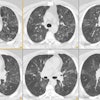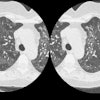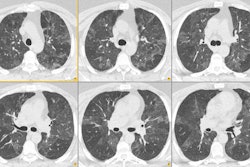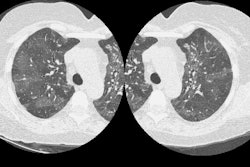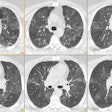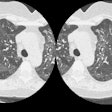AJR Am J Roentgenol 2001 Jan;176(1):201-4
The solitary pulmonary nodule on chest radiography: can We really tell
If the nodule is calcified?
Berger WG, Erly WK, Krupinski EA, Standen JR, Stern RG
OBJECTIVE. This study was designed to assess the ability of radiologists to accurately
detect calcification within a solitary pulmonary nodule with chest radiography. MATERIALS
AND METHODS. Thirty-five solitary pulmonary nodules that were examined by both
posteroanterior and lateral chest radiography and on thin-section CT were retrospectively
identified. Fourteen radiologists blinded to the results of CT assessed the nodules for
the presence or absence of calcification using chest radiographs alone. The radiologists
then assigned one of six values on the basis of their confidence in that assessment. The
accuracy and confidence values for each nodule were analyzed on the basis of the presence
or absence of calcification as seen on CT. Receiver operating characteristic (ROC) curves
were generated. RESULTS. The positive predictive value of a "definitely
calcified" assessment was 0.93. Combining all levels of radiologists' confidence, the
sensitivity of the chest radiograph in the detection of calcium was 0.50 and the
specificity was 0.87. There was no difference in the confidence levels reported between
the calcified and noncalcified nodules, and there was no correlation of nodule size with
accuracy or confidence level. CONCLUSION. The ability of radiologists to detect calcium in
a solitary pulmonary nodule by chest radiography was low, as defined by the ROC data. Of
the "definitely calcified" nodules, up to 7% may not be calcified and may be
potentially malignant. Without documentation of long-term stability, a low threshold for
recommending CT may be appropriate.
PMID: 11133566, UI: 20577988
